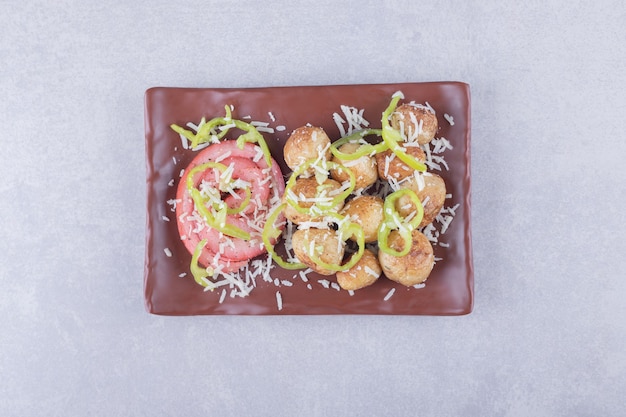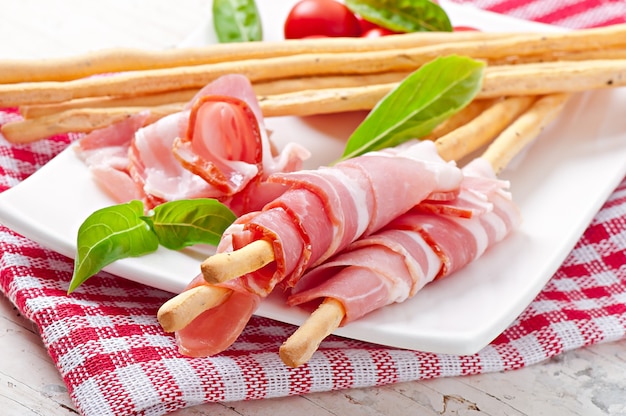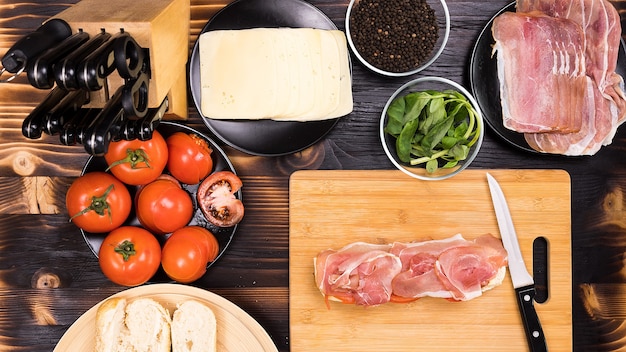Ah, spiral sliced ham. It's a real crowd-pleaser, isn't it? Perfect for a holiday feast, a family gathering, or even just a cozy dinner for two. But how long do you actually cook it for? That's the million-dollar question, and I'm here to break it down for you. I've been making spiral sliced ham for years, and I've learned a few things along the way – some tips and tricks that make the difference between a good ham and a truly amazing one.
My first attempt at spiral sliced ham was a bit of a disaster. I was so excited to make this fancy-looking dish, but I ended up with a dry, overcooked mess. But, as they say, you live and learn! Now, I'm a ham-making pro, and I'm ready to share my knowledge and hopefully save you from the same fate. Let's dive in, shall we?
(Part 1) Understanding Spiral Sliced Ham

1. What is Spiral Sliced Ham?
First things first, let's define our subject. Spiral sliced ham is exactly what it sounds like: a ham that's been sliced in a beautiful spiral pattern. This makes it a dream to cook because the slices pull apart easily, and it reheats faster than a whole ham. And it's usually pre-cooked, which means it's already been cooked to a safe temperature and just needs to be reheated. But there's a bit of confusion surrounding the terms "fully cooked" and "pre-cooked," so let's clear that up.
2. Pre-cooked vs. Fully Cooked?
This can be a bit tricky, so let's be clear. "Pre-cooked" means the ham has been cooked to a safe temperature but might not be fully cooked to the level you'd enjoy. Think of it as a head start on the cooking process. "Fully cooked" means it's ready to eat straight out of the package. But hold on! That doesn't mean you can't heat it up! In fact, reheating a fully cooked ham brings out the flavors, makes it extra juicy, and adds that irresistible glazed finish. But here's the key: always check the label. It'll tell you if it's fully cooked or just pre-cooked.
(Part 2) Getting Ready for Cooking

3. Choosing the Right Ham
So, you're ready to get cooking. But before you grab the first ham you see, remember, choosing the right ham is important! You don't want to get carried away with a ham that's too big for your needs or one that's not fully cooked. Here's my advice:
- Size Matters: Consider the size of your gathering. You don't want to be left with mountains of leftovers, but you also don't want to run out of ham before everyone's had their fill! A good rule of thumb is to plan for about ?? pound per person.
- Check the Label: Make sure the ham is fully cooked or pre-cooked, depending on what you're looking for. If you want to eat it straight away, choose a fully cooked ham. If you want to cook it a bit more for a more flavorful result, opt for a pre-cooked ham.
- Choose Your Flavor: Spiral sliced hams come in a range of flavors, from honey-glazed to brown sugar and even maple syrup. It really depends on your personal preference. If you're a fan of sweet and savory, go for a honey-glazed ham. If you prefer a more classic taste, try a brown sugar ham. And if you're feeling adventurous, go for a maple-flavored ham.
4. Tools of the Trade
You don't need a whole kitchen arsenal to cook a spiral sliced ham. A few basic tools are all you need.
- Baking Dish: A large enough baking dish to comfortably hold the ham. Make sure it has sides that are tall enough to prevent the glaze from spilling over.
- meat thermometer: Essential for ensuring the ham is cooked through. It's the best way to know for sure if your ham is ready to eat.
- Glaze: Optional, but a good glaze can add extra flavor and a beautiful finish to your ham. You can use store-bought glaze or make your own. I've included some glaze ideas later in the article.
- Foil: To cover the ham while it cooks and help it retain moisture. Aluminum foil is ideal because it helps to create a steamy environment that keeps the ham juicy.
(Part 3) Cooking the Spiral Sliced Ham

5. The Baking Method
This is my go-to method for cooking a spiral sliced ham. It's simple and usually gives excellent results. Here's how to do it:
- Preheat: Set your oven to 325 degrees Fahrenheit (163 degrees Celsius). This is a moderate temperature that allows the ham to cook evenly without drying out.
- Prepare the Ham: Remove the ham from its packaging and place it in a baking dish. If it's pre-cooked and not fully cooked, you can add a cup of water to the bottom of the dish. This helps to keep the ham moist during cooking.
- Cover and Bake: Cover the ham tightly with aluminum foil. Bake for about 15 minutes per pound for pre-cooked ham. For fully cooked ham, reduce the baking time to about 10 minutes per pound. This allows the ham to reheat thoroughly and reach a safe temperature.
- Uncover and Glaze: After the initial baking time, remove the foil and brush the ham with your chosen glaze. The glaze will start to caramelize and create a delicious crust.
- Continue Baking: Return the ham to the oven and bake for another 15-20 minutes, or until the glaze is bubbly and the ham reaches an internal temperature of 140 degrees Fahrenheit (60 degrees Celsius). This ensures the ham is cooked through and the glaze has had enough time to set.
6. The Roasting Method
If you prefer roasting, here's the lowdown. It's similar to baking, but with a few slight variations.
- Preheat: Preheat your oven to 350 degrees fahrenheit (177 degrees Celsius). This slightly higher temperature helps to create a crispier crust.
- Prepare the Ham: Place the ham in a roasting pan. If it's pre-cooked, add a cup of water to the bottom of the pan for extra moisture. The water helps to create steam and keeps the ham moist.
- Roast: Roast the ham for 15-20 minutes per pound, or until the internal temperature reaches 140 degrees Fahrenheit (60 degrees Celsius). Be sure to check the temperature with a meat thermometer to ensure it's cooked through.
- Glaze: Remove the ham from the oven and brush with your chosen glaze. The glaze will start to caramelize and create a delicious crust.
- Return and Finish: Return the ham to the oven and bake for another 10-15 minutes to set the glaze. This allows the glaze to develop a beautiful shine and caramelize properly.
7. The slow cooker method
For a super-easy, hands-off approach, the slow cooker is a fantastic option. It's ideal for those busy days when you need a delicious meal without a lot of fuss.
- Prepare the Ham: Place the ham in your slow cooker. If it's pre-cooked, add a cup of water to the bottom. This helps to keep the ham moist and prevents it from drying out in the slow cooker.
- Cook: Cook on low for 4-6 hours, or on high for 2-3 hours, until the ham reaches an internal temperature of 140 degrees Fahrenheit (60 degrees Celsius). The slow cooker does all the work for you, so you can relax and let it simmer away.
- Glaze: Remove the ham from the slow cooker and brush with glaze. The glaze will warm up and create a lovely shine.
- Serve: Return the ham to the slow cooker to keep warm and serve. It's best to serve the ham straight from the slow cooker to keep it nice and warm.
(Part 4) Cooking Time Considerations
8. Different types of ham
The cooking time for a spiral sliced ham can vary slightly depending on the type. Here's a breakdown to help you decide how long to cook your ham:
| Type of Ham | Cooking Time (per pound) |
|---|---|
| Fully Cooked | 10 minutes |
| Pre-cooked | 15 minutes |
Remember, these are just general guidelines. Always check the package directions for the specific cooking time recommended for your ham.
9. Ham Size Matters
Naturally, the size of your ham will determine the total cooking time. Use the cooking time per pound as a guide and adjust accordingly. For example, if you have a 10-pound ham and it's fully cooked, you'll cook it for about 100 minutes (10 pounds x 10 minutes per pound).
10. Internal Temperature is King
No matter which method you choose, the most important thing is to ensure the ham is cooked through. Always use a meat thermometer to check the internal temperature. The ideal internal temperature for a cooked ham is 140 degrees Fahrenheit (60 degrees Celsius). This ensures the ham is safe to eat and cooked to a delicious, tender texture.
(Part 5) Glazing Your Ham
11. The Art of Glazing
A good glaze can transform your ham into something truly special. But don't worry, you don't need to be a culinary whiz to create a delicious glaze. Here are a few ideas to get you started:
- Classic brown sugar glaze: Combine brown sugar, honey, mustard, and a touch of orange juice for a sweet and tangy glaze. This is a classic combination that always pleases a crowd.
- Sweet and Savory: Mix honey, maple syrup, and a dash of soy sauce for a balanced sweet and savory glaze. This glaze adds a hint of umami to the ham.
- Fruity Delight: Use apricot preserves, Dijon mustard, and a splash of orange juice for a fruity and tangy glaze. This glaze adds a burst of fruitiness to the ham and makes it extra flavorful.
- Simple and Delicious: Just use honey or maple syrup for a classic, sweet glaze. Sometimes, the simplest glazes are the best.
12. Glazing Techniques
Glaze the ham about 30 minutes before it's fully cooked. This allows the glaze to caramelize and develop a lovely crust. You can brush the glaze on the ham with a pastry brush or use a spoon to drizzle it over. If you're using a slow cooker, add the glaze during the last 30 minutes of cooking.
(Part 6) Serving and Storing
13. Serving It Up
Once the ham is cooked, let it rest for 10-15 minutes before carving. This allows the juices to redistribute and makes the ham more tender. You can use a sharp knife or a carving fork to slice the ham.
Serve the ham with your favorite sides. I love it with mashed potatoes, green beans, and a simple salad. But it also pairs well with other sides, such as baked sweet potatoes, macaroni and cheese, or even a fruit salad.
14. Leftovers? No Problem!
Don't worry about leftover ham. It's perfect for sandwiches, salads, or even just as a snack. Store leftovers in the fridge for up to 4 days. Leftover ham can also be used in a variety of dishes, such as ham and bean soup, ham and cheese quiche, or even a simple ham and potato hash.
(Part 7) Troubleshooting
15. Dry Ham?
If your ham turns out a bit dry, don't despair. You can add some moisture by basting it with pan juices or a glaze during cooking. Or, you can simply add a bit of butter or honey to the top of the ham before serving.
16. Overcooked Ham?
Overcooked ham can be tough and dry. Unfortunately, there's not much you can do to fix this. But you can still make it edible by shredding it and using it in dishes like soup, stew, or chili.
(Part 8) FAQs
1. How do I know if my spiral sliced ham is fully cooked?
The best way to tell is to check the label. It should clearly state whether the ham is fully cooked or pre-cooked. If you're unsure, it's always best to err on the side of caution and cook the ham a little longer.
2. Can I cook a spiral sliced ham from frozen?
It's not recommended to cook a spiral sliced ham from frozen. It's best to thaw it in the refrigerator overnight before cooking. This ensures the ham thaws evenly and cooks properly.
3. How long can I keep a cooked spiral sliced ham in the fridge?
A cooked spiral sliced ham can be stored in the refrigerator for up to 4 days. After that, it's best to freeze it.
4. Can I freeze a cooked spiral sliced ham?
Yes, you can freeze a cooked spiral sliced ham for up to 2 months. Make sure to wrap it tightly in plastic wrap and then in aluminum foil. This will help to prevent freezer burn.
5. What should I do if my ham has a strong odor?
If your ham has a strong odor, it's best to discard it. It may be spoiled and not safe to eat.
There you have it! I hope this guide has been helpful and has given you the confidence to tackle your next spiral sliced ham adventure. Remember, it's not rocket science. Just follow the basic guidelines and you'll be rewarded with a delicious and satisfying meal. Happy cooking!
Everyone is watching

Corn on the Cob: The Ultimate Guide to Perfectly Cooked Ears
Healthy MealsAh, corn on the cob. Just the name evokes images of sunny days, barbecues, and that sweet, juicy flavour that ...

Scallops: The Ultimate Guide to Perfect Cooking
Healthy MealsAh, scallops. Those delicate, sweet, and utterly delicious morsels of the sea. They hold a special place in my...

Spaghetti Squash: The Ultimate Guide to Cooking and Serving
Healthy MealsRemember that time you saw spaghetti squash at the supermarket, looking all bumpy and strange, and thought, "W...

Salmon Cooking Times: Perfect Guide for Every Recipe
Healthy MealsLet me tell you, cooking salmon is an art form. It's all about getting that perfect balance: juicy and tender,...

Ham Cooking Time: How Long to Bake, Smoke, or Boil a Delicious Ham
Healthy MealsAh, ham. It's a classic, isn't it? A real crowd-pleaser, especially around holidays. And when done right, it'...
